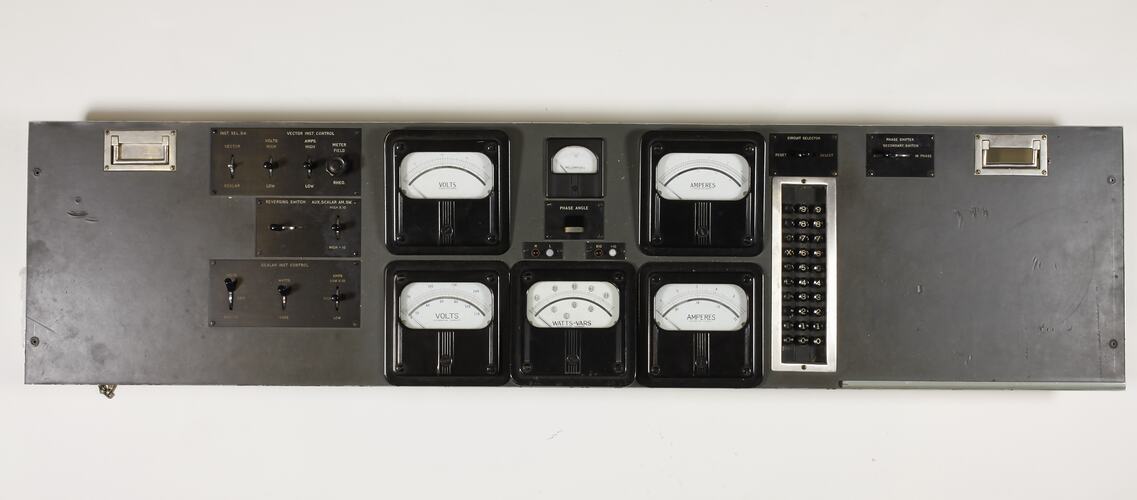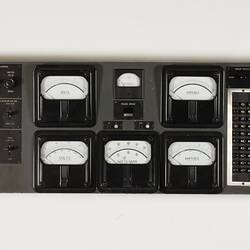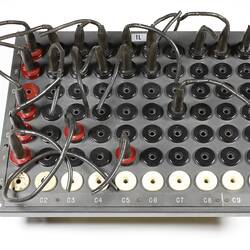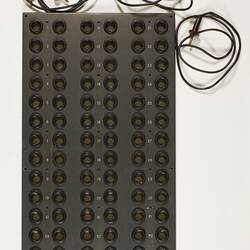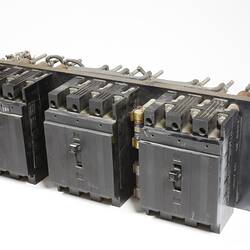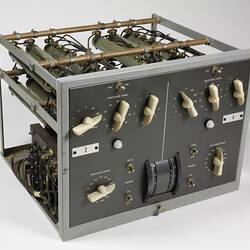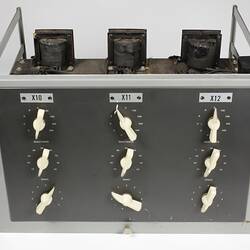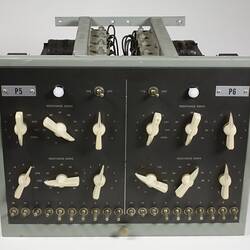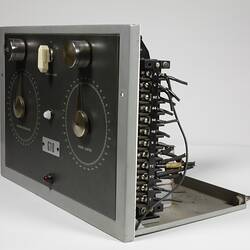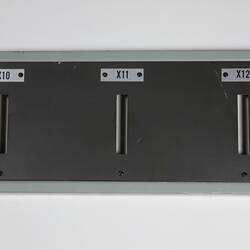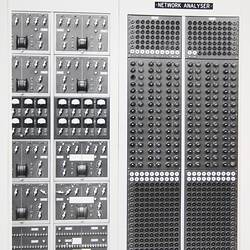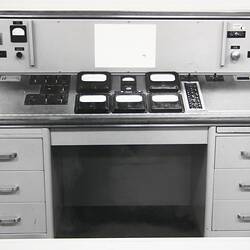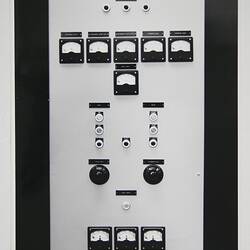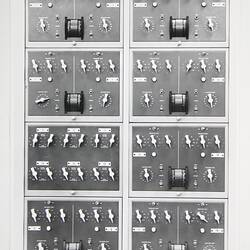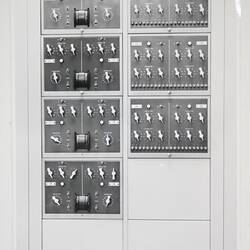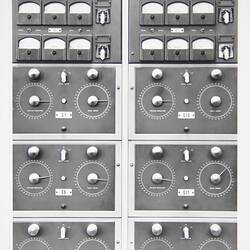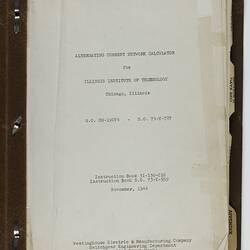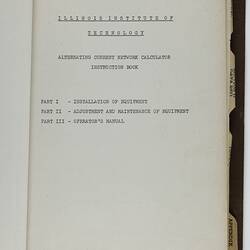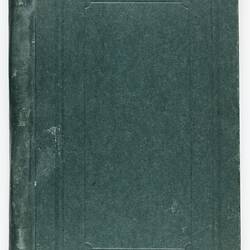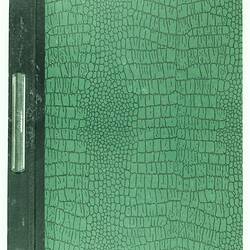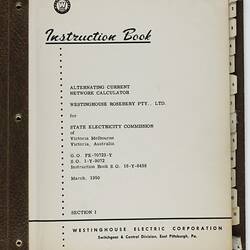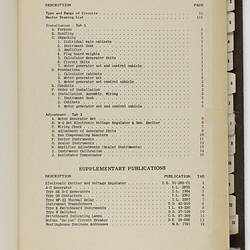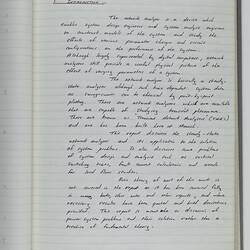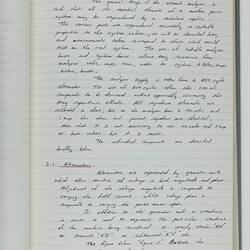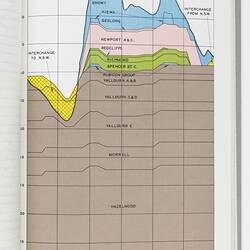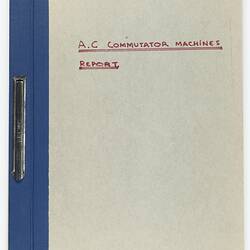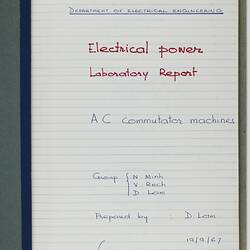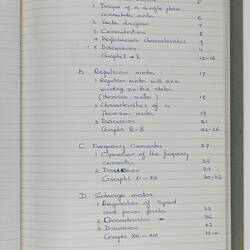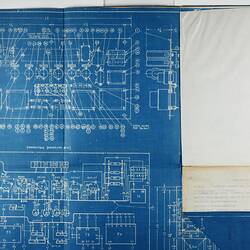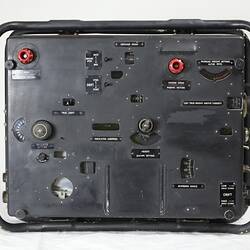Summary
Key components of a Network Analyser manufactured by Westinghouse Electric Corporation, Pittsburgh, USA and supplied to the State Electricity Commission of Victoria (SECV) in 1950.
The key components are accompanied by instruction manuals and books, reports and a blueprint.
The Network Analyser is an excellent example of an analogue computer. The AC Network Analyser was used by the State Electricity Commission of Victoria (SECV) for the development of the Victorian Power System from 1950 into the 1960s. It was manufactured by Westinghouse Electric Corporation (Pittsburgh USA).
The Analyser was used to model the connection between the Latrobe Valley and Melbourne, and from Melbourne to NSW. The development of complex power systems being too difficult to do by 'hand', Westinghouse produced several similar models for use around the world. The system actually modelled by the Analyser worked well although there were problems later.
From 1967 to about 1985, it was used for undergraduate teaching in power systems by the Department of Electrical Engineering at Monash University. After the mid-1980s, digital representations of power systems were used for power system teaching and the Westinghouse Analyser fell into disuse.
Physical Description
The components of the Alternating Current Network Analyser and related items, donated by Monash University, are: sign, control panel, load adjuster unit, capacitor unit, left and right busbar patch panels, system connection patch panel, cover panel, resistor unit, reactance unit, transformer impedance unit, generator unit, generator meter unit, switches, cables, photographs of electrical gauge panels and desk, two instruction manuals, two reports, two instruction books, one blueprint, and Monash University display labels. For more detailed descriptions, please see the Narrative entitled: 'Components and items associated with The Network Analyser - descriptions and inscriptions'.
Significance
In the 1950s, population and industry expanded in Australia; the standard of living also rose. The SECV responded to this new situation by developing a grid system. Previously, each population/industrial centre was supplied independently of the others. The Analyser played a real and vital role in the power grid which was the actual basis of everyday life in Victoria and Australia since then. Water, sewerage and electricity grids were all established using non-digital technology.
The Analyser was used at a time when digital computers were being developed. It was by no means certain that digital devices would dominate and eliminate analogue devices. The Analyser had advantages over digital devices. It used a step-by-step process in which designers could develop an overall understanding of the system being modelled. With a computer, the whole network is produced in one stage and the designers have to unravel it.
More Information
-
Collecting Areas
-
Acquisition Information
Donation from Electrical & Computer Systems Department, Monash University, 04 Oct 2001
-
Manufacturer
Westinghouse Electric Corporation, Pittsburgh, Pennsylvania, United States of America, circa 1950
-
User
State Electricity Commission of Victoria (SECV), Victoria, Australia, 1950 - 1967
1967 is the latest possible date. -
User
Monash University, Department of Electrical Engineering, Victoria, Australia, 1967-1985
1985 is an approximate date. -
Inscriptions
For inscriptions, please see the Narrative entitled: 'Components and items associated with The Network Analyser - descriptions and inscriptions'.
-
Classification
Computing & calculating, Analogue computing, Computer systems
-
Category
-
Discipline
-
Type of item
-
Part Dimensions
412 mm (Width), 380 mm (Depth), 312 mm (Height)
Load Adjuster Unit.
-
Part Dimensions
412 mm (Width), 375 mm (Depth), 310 mm (Height)
Capacitor Unit.
-
Part Dimensions
412 mm (Width), 180 mm (Depth), 322 mm (Height)
Left Busbar Patch Panel.
-
Keywords
